News
Still Moving Inside Me: the depth of the image that moves in silence
It’s the image that speaks.
I move with it and it moves with me, it’s a matter of breathing.
It’s prosaic, not poetic. It’s the image that speaks and I speak with it, there’s no script.
It’s free, but without my action it wouldn’t exist.
And this shape, was given by me, with these hands.
Storms like Turner’s
All the turmoil inside
Radical manifesto without hysteria, taking a stand
Beyond its limits, only the certainty
That I was there
And it still moves inside me.
From the stillness of the image raise thoughts that (are) debating inside us. Developed by visual artist Tatiana Macedo, the exhibition 'Still Moving Inside Me' is a silent metaphor about the way we absorb reality and how, subtly, its image communicates with our unconscious.
Braga Media Arts spoke to the visual artist about this work, hosted by gnration until June 28 and brought to Braga for the first time invited by CINEX, an expanded cinema programme promoted by Braga 25.
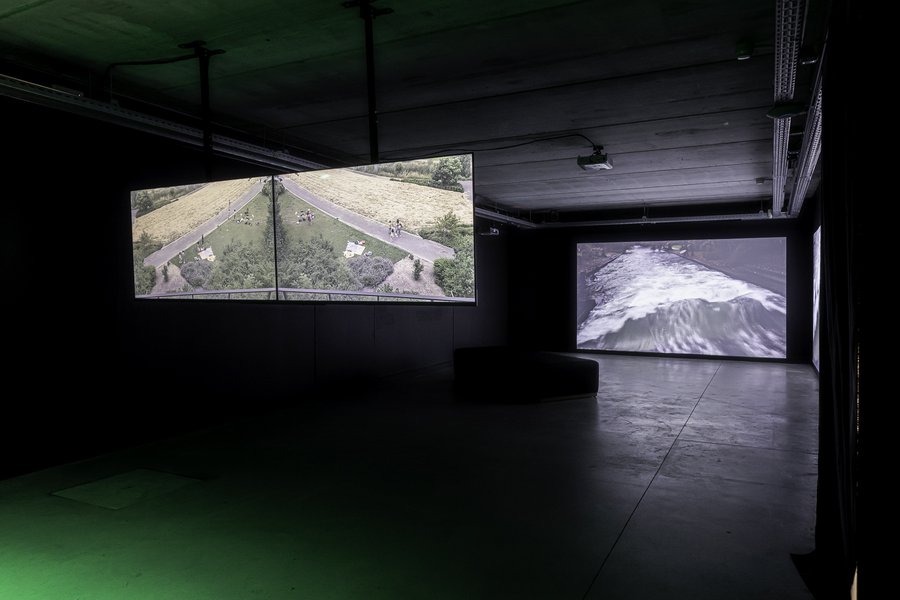
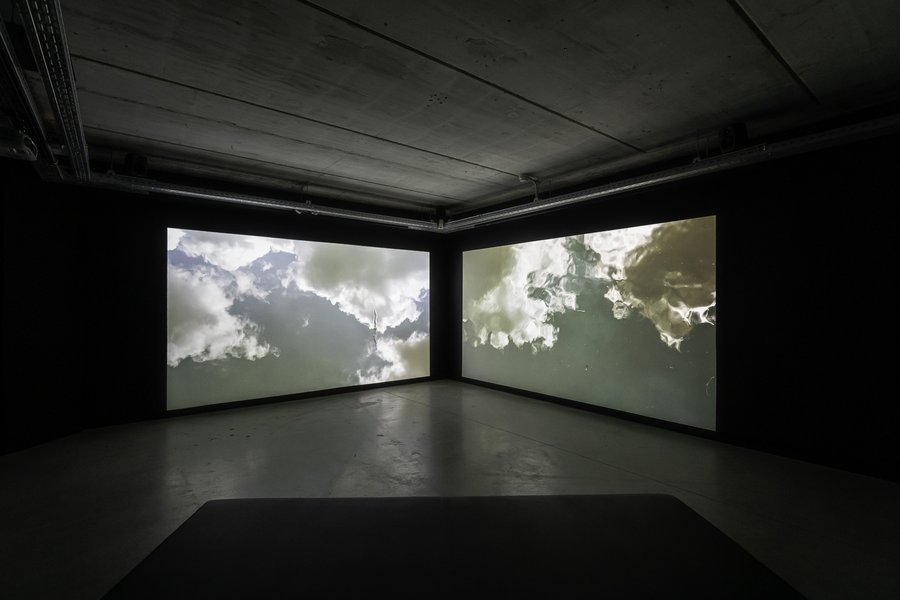
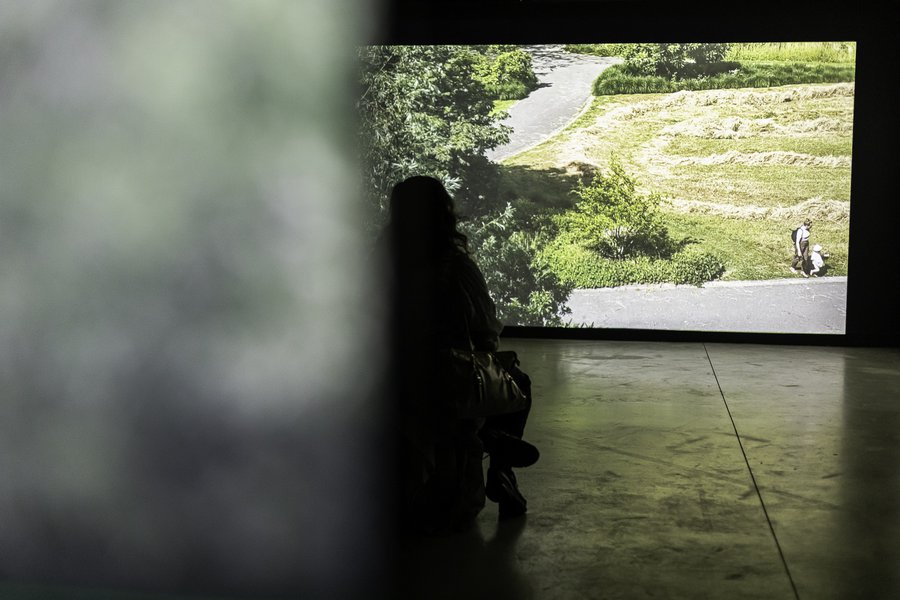
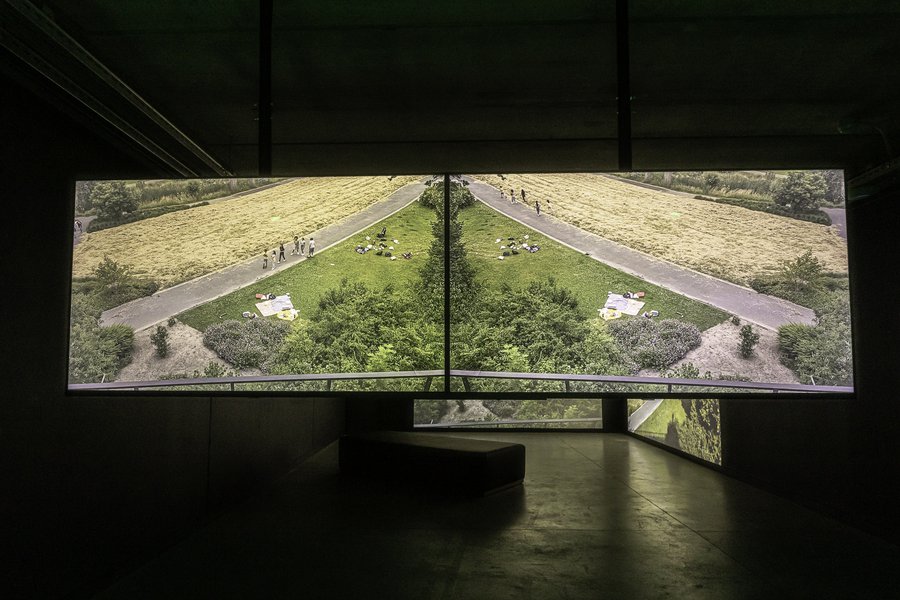
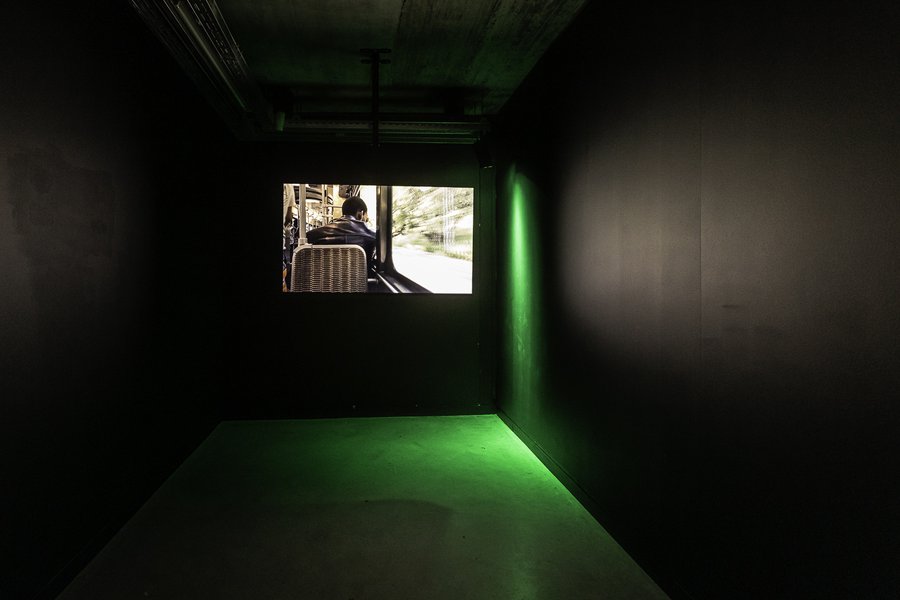
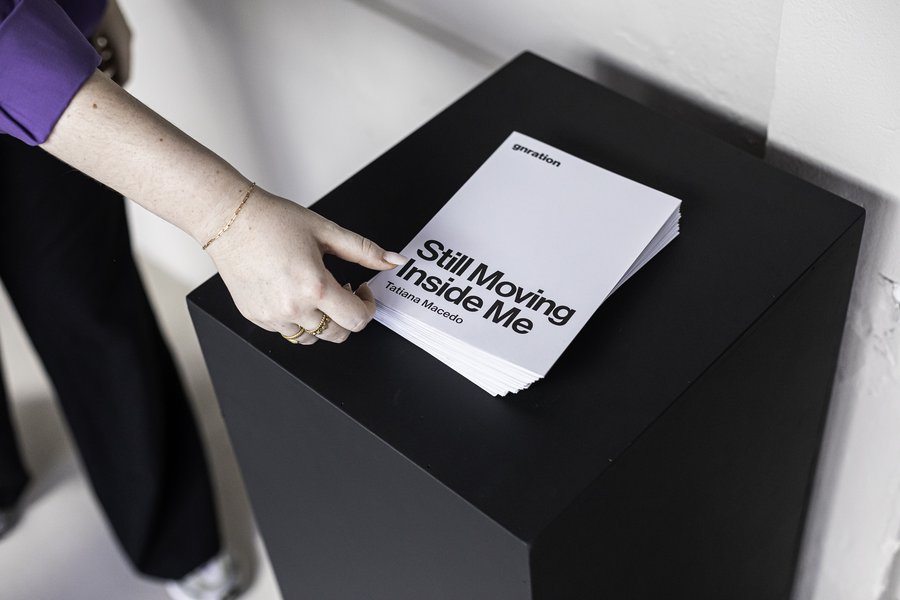
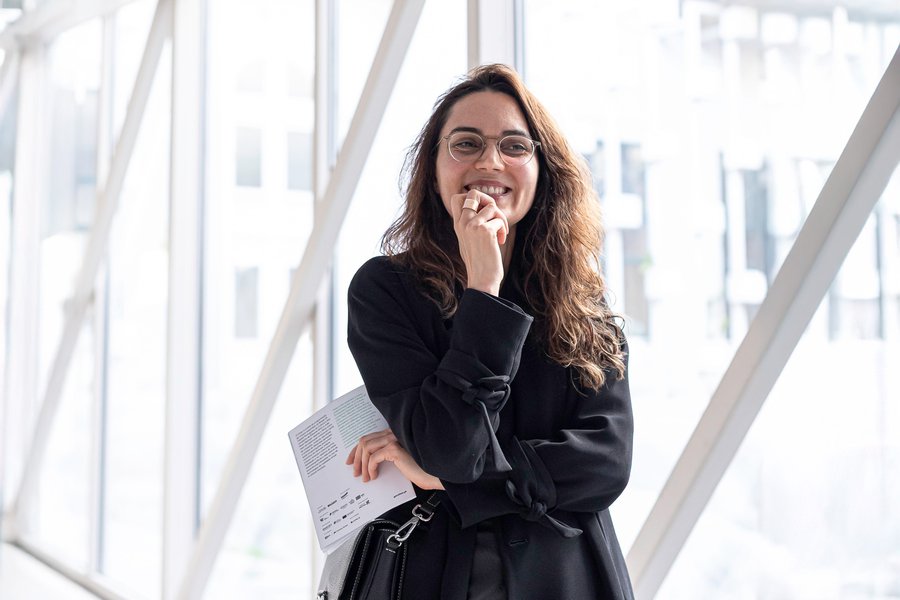
Not afraid to challenge and cross the concepts of photography, cinema, sound or painting, Tatiana Macedo - a leading visual artist and winner of distinctions such as the Sonae Media Art Prize or the SAW Film Prize (American Anthropological Association) - explores the image with and in all its senses.
For the first time in Braga upon the invitation of the expanded cinema programme CINEX, promoted byBraga 25, the author presents 'Still Moving Inside Me', a multichannel video installation that uses the linguistic paradox of the image to provoke the viewer's concentration and interpretation. Through audiovisual “windows” that observe the reality that fits in the camera's frame, the work creates different layers and readings about the way we communicate with the image and about the emotions that the movement and stillness of actions evoke in each of us.
To better understand and detail the genesis of this work, Braga Media Arts team asked Tatiana Macedo about the motivations, inspirations and subliminal messages of “Still Moving Inside Me”.
Braga Media Arts: What was the concept behind the construction of 'Still Moving Inside Me'?
Tatiana Macedo: The 'Still Moving Inside Me' project came from my desire to create an installation with material that I've been filming for a few years now (and will continue to film) that has a particularity: they are mostly fixed shots that frame an action that I see, an observation of a “real” event, not written by me, and which I don't control: I don't control what moves inside the shot, how it moves, at what pace it moves, etc., but what I can control is the framing and the duration of the shot. This is an exercise I've been practicing for many years and will continue to do so.
The title is therefore a direct reference to the image and what moves within it, (the image is the subject of the sentence) but it is also an allusion to the state of connection I must have at the moment of filming, in that instant things move inside me and I move with them, almost in the sense of breathing because the time of filming is real time. When I define a frame, I define a series of starting or finishing points, transforming what happens inside into a fiction or a dance, and I wait until I feel the action or dance has come to an end. I define the limits of the image and the movement and its duration, I am both the photography director and the choreographer, but those who exercise this movement, this ‘dance’, move with their freedom, which the space and the context can condition, or not. There are a whole series of social, natural, landscape, architectural and other constraints that interfere with this 'dance'. I'm just one of those elements that shapes them but doesn't control them. It's a metaphor for the experience of life, perhaps. And everything repeats itself, in loops. It's also inevitable to think of the history of art and painting, when we talk about fixed shots, and obviously of cinema.
BMA: From a practical point of view, what can we see in this piece?
TM: 'Still Moving Inside Me' is divided into three pieces, a bit like a classical symphony: the first piece is entitled 'Prelude: 2: 00 am letters' (an infinite loop on a screen in the room that serves as an antechamber); the second, which is the largest piece, with a 17-minute loop, is called 'Twin Mountains in 3 Movements' and is also divided into three chapters, entitled 'I- Heads and Tails', 'II- Mushroom unaware of leaf' and 'III-Turner'round'; and, finally, the piece 'Epilogue: Things in you that are things in me'. All of them were filmed at different times and in different geographies, with one scene taking up a large part of the action, depicting a large group of young people having a picnic in a city park. The interaction between them unleashes a wide range of human relationships and emotions characteristic of being in contact, in presence, in community and in freedom in a circumscribed, public, urban space.
BMA: What fascinated you about this process of “talking to the image” and how it influences the viewer's vision and behavior?
TM: It's a bit like the reverse of reading: when we read prose, essays or poetry, we imagine what we read according to our personal experience, our own history, our inner world. When the viewer is confronted with the worlds created by my installations, most of the time they have to create that text, that chain of meaning and narrative, more or less linear and always according to their own world, perception and experience. Reading texts and reading images is the same exercise and requires work and commitment, attention and openness, letting go and accepting the proposal. But I am rarely seduced by symbolism, what I film is real, it was in front of me, what I did was a transformation and construction based on that observation. The game therefore begins with me, the moment before I decide to film: there is something that catches my eye, that speaks to me, and the action begins during the capture of the image in which a series of decisions are already made by me regarding what I leave inside or outside the image, what moves inside and the time frame I give it to move. Making these decisions implies that I also move and that the tempo is the same. At that moment there is a kind of fellowship. I am the first spectator of my images, I move with them and they move inside me.
It's also a kind of 'giving voice to the silence in order to understand what the silence wants to tell us', as I heard someone say on a radio program recently, 'stretching our attention and surrendering to the unknown', without a voice in our ear.
BMA: This piece is very introspective and personal. Not only for you when you share your vision, but also for the audience in how they interpret it. Why did you choose to put this freedom of interpretation in the hands of the spectator?
TM: I always do that. I invite the viewer to be active, to do the work they have to do every day and all their lives: to interpret what is happening to them and around them. My pieces are microcosms, small worlds, mostly actions in a circumscribed space, small gestures, micro-events that expand beyond the frame. In other words, what happens inside the image actually opens up a whole subjective, sensory, imaginative field and relationship with the world and with ideas far beyond the limits of the image. But it is these limits, together with the scale and the rhythmic modulation of sound and between the various screens and projections, that define the intensity of these actions, movements, spaces and times. It's a new experience that I create and from that experience there will be traces of it impregnated in the body of whoever indulges in it. From that moment on, the observation of someone walking in a park, or a surfer in a park in the middle of a city in winter, will become dances or allegories.
As Eduardo Brito says in his text for the exhibition sheet: 'the proposal could be something else: to be with what can be called audiovision: to see the music that moves inside us, like the image of a Sunday in the park, to hear the images that move inside us, like the movements of a piece of music'.
BMA: What role does Berke Can Özcan's music play in your work? How does it connect with your images?
TM: I came across Berke's music at the beginning of March this year. It felt like we'd known each other forever. Berke composes in the same way that I do, his music evokes a richly layered imagistic universe and, in the same way, my images have countless layers of sound, rhythm, body, field recordings or emotional modulation, creating different spaces and times, within experimentation and improvisation, from free jazz to experimental electronics or ambient.
My images of reality, which are transformed into a reality of images, also happens with Berke's music, which sometimes produces sounds from everyday objects or instruments he builds, but which then design their own universe, which is also narrative. Another aspect that unites us is the artistic and musical references we both share, in a broad universe that begins with John Cage and the loop as form and meaning. In this piece I selected compositions mostly from Berke's solo work, entitled 'Mountains are Mountains', and redesigned some of them with cuts, loops and overlaps. In the end, I had to balance the sound of the various pieces in the space so that the sound contamination from one piece to another functioned as a third composition: the overall soundscape of the exhibition itself.
BMA: This is the first time you've presented your work in Braga, invited by Braga 25 - Portuguese Capital of Culture. How does your work fit into CINEX, Braga 25 expanded cinema programme?
TM: I was invited by Luis Fernandes and Eduardo Brito, who have been following my work for several years.
[In another moment, the artist says that] Photography and Cinema are as much about what they reveal as what they hide. Drawing an analogy with sound, you could say that Photography and Cinema exist in the intervals of silence.
[About the work and its inclusion in the CINEX program, curator Eduardo Brito writes:]
Cinema ‑ expanded, to be expanded or expanding – is a journey. It takes place in time, it implies displacement: we start at one point and end up at another, the beginning and the end of the film, whether in the cinema or in the gallery. There’s no getting away from it: here we are faced with the power of moving images. If we add illusion to this fundamental force – photographic, auditory, narrative, relational – the journey becomes a passage: we are on the other side of the mirror and, between diving in and contemplating, we become part of this whole, which is always greater than the sum of its parts. Tatiana Macedo and the videos that make up the installation Still Moving Inside Me, with music by Berke Can Özcan, bring us not only these two forces ‑ the journey; the illusion ‑ but also the power of listening as the figure of eight: at a certain point, it’s unnecessary to try to understand, to look for a meaning, a predominance: we will always be returning and leaving again. Among the countless layers and readings of this work ‑ of its alignment in the artist’s path, of its echoes in each one’s personal inventory of reminiscences ‑ the proposal could be another: to be with what can be called audiovision: to see the music that moves within us, like the image of a Sunday in the park, to hear the images that move within us, like the movements of a piece of music. To stop and contemplate the journey; to drift through the images that are projected onto fixed surfaces: in one case, to see the travelling, in the other, to be the traveling itself.So we let go of our curiosity about what the passenger in front is thinking in Prelude : 2:00 am letters; but if we let ourselves be on the journey, we become the illusion of his thoughts. We don’t care whether what we see is a mirror or a panorama in Epilogue: things in you that are things in me: we become the illusion of a vigil at the end of a nap. In Mushroom unaware of leaf ‑ the second movement of Twin Mountains in 3 movements ‑ two cloudy skies are seen reflected in a watery surface, then, in one of them, a body enters the plane: the appearance of an animate being becomes a drifting tree branch: things become other things, downtime, elementary principles of creation. Again the figure of eight.
The exhibition can be visited for free at gnration's Galeria Um until June 28, 2025. Learn more about Tatiana Macedo's work here and find out more about 'Still Moving Inside Me' at gnration.pt.
__
Promoted by Braga 25 - Portuguese Capital of Culture, CINEX is an expanded cinema programming line that crosses the sound and visual universes to create new perspectives on the seventh art.
Support: Portuguese Republic - Culture / Directorate-General for the Arts. RTCP - Portuguese Theaters and Cinemas Network

